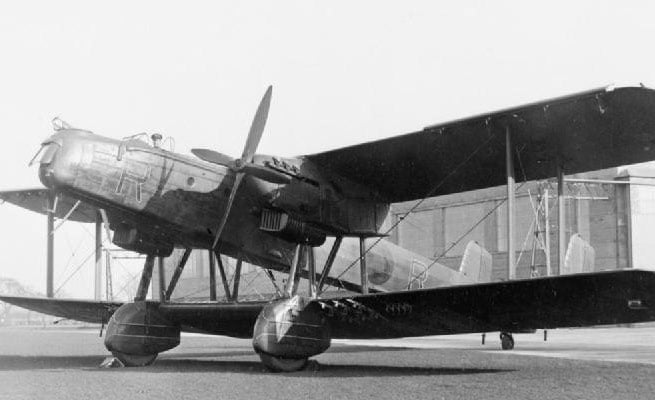
It is normally accepted that if an aircraft looks good its performance will be good, however there are aircraft that are downright ugly – yet some did the job that they were designed for while others could barely fly and were dangerous for the pilots and quite often, those around or below them.
Whether the designs worked or not, aviation would not be as advanced as it is if there were not designers and engineers prepared to take risks. One such was the Stipa-Caproni, an experimental Italian aircraft designed in 1932 by Luigi Stipa and built by Caproni. It featured a hollow, barrel-shaped fuselage with the engine and propeller completely enclosed by the fuselage—in essence, the whole fuselage was a single ducted fan. Although the Italian Royal Air Force was not interested in further developing the aircraft, its design influenced the development of jet propulsion.
Stipa’s basic idea was to mount the engine and propeller inside a fuselage that itself formed a tapered duct and compressed the propeller’s airflow and the engine exhaust before it exited the duct at the trailing edge of the aircraft. This is a similar principle as is used in turbofan engines but used a piston engine to drive the compressor/propeller rather than a gas turbine. After years spent studying the idea mathematically he found that the venturi tube’s inner surface needed to be shaped like an air-foil in order to achieve the greatest efficiency. Various other factors including the optimum shape of the propeller, most efficient distance between the leading edge of the tube and the propeller, and the best rate of revolution of the propeller were all added to the design. The Italian government contracted Caproni Company to build a prototype aircraft.
The result was a mid-wing monoplane of mostly wooden construction with a barrel-like tube, short and fat fuselage, open at both ends to form the tapered duct, with twin open cockpits in tandem mounted in a hump on top of it. The wings were elliptical and passed through the duct and the engine nacelle inside it. The duct itself had a profile similar to that of the air-foils, and a fairly small rudder and elevators were mounted on the trailing edge of the duct, allowing the ducted propeller wash to flow directly over them as it exited the fuselage to improve handling. The propeller was mounted inside the fuselage tube, flush with the leading edge of the fuselage, and the 120-horsepower de Havilland Gipsy III engine was mounted within the duct behind it. The aircraft had low, fixed, spatted main landing gear and a tail wheel.
The Stipa-Caproni first flew on 7 October 1932 when initial testing showed that the “intubed propeller” design did increase the engine’s efficiency and the additional lift provided by the airfoil shape of the interior of the duct itself allowed a very low landing speed of only 68 km/h. The placement of the rudder and elevators in the exhaust from the propeller wash at the trailing edge of the tube gave the aircraft handling characteristics that made it very stable in flight, although they later were enlarged to further improve the plane’s handling characteristics. Unfortunately, the “intubed propeller” design produced so much aerodynamic drag that the benefits in engine efficiency were cancelled out, and the aircraft’s top speed proved to be only 131 km/h.
Although test pilots found the aircraft extremely capable with a slow landing speed, the Air Force did not continue development.
AD Scout – Upside-down biplane?
An anti-Zeppelin defender more closely resembled an upside-down biplane than an aircraft that served any purpose. It featured a high-mounted pilot-and-gun pod that made the aircraft unstable in flight and handled like an overloaded shopping cart on the ground. Of the four that were built two were constructed by R.I. Blackburn that later built some of the ugliest production aircraft ever to fly.
The Scout (also known as Sparrow) was an unconventional aircraft – a biplane with a fuselage pod mounted on the upper wing. A twin-rudder tail was attached by four booms, and it was provided with an extremely narrow-track undercarriage. The primary armament was intended to be a 2-pounder recoilless Davis Gun, but this was never fitted. Four prototypes were ordered in 1915 and two each were built by Hewlett & Blondeau and the Blackburn Aeroplane & Motor Company.
Trials flown by pilots of the Royal Naval Air Service at Chingford showed the aircraft to be seriously overweight, fragile, sluggish, and difficult to handle, even on the ground. The project was abandoned and all four prototypes scrapped.
Handley Page HP.50 Heyford
It would be difficult to imagine a time when radar was not an essential piece of equipment in aircraft, but the first plane to actually carry a radar was also one a very strange looking aircraft that could easily be mistaken for a flying clothes peg with its unorthodox arrangement arrangement wherein the fuselage was joined to the upper wing rather than the lower one, which gave the aircraft a relatively nose-high orientation while on the ground.
The Heyford was developed in response to the Air Ministry’s need for a new heavy night bomber. Unlike the company’s previous models the Heyford was constructed of metal instead of wood.
The design was revised a number of times before a sole prototype was produced and performed its maiden flight on 12 June 1930 and commencing service trials shortly thereafter.
Though the HP.50 Heyford never dropped a bomb or fired a gun in action, it was the RAF’s most important heavy bomber during most of the 1930s although it could barely reach a speed of 120. It never dropped a bomb or fired a gun in action, but the Heyford was the RAF’s most important heavy bomber during most of the 1930s. One was even said to still be in service as late as 1944.
Pilots apparently liked the Heyford, though sitting far higher than anything else they’d experienced (nearly 17 feet up) meant it took lots of practice to learn to land one.
Kalinin K-7
Russia is known for its excessively large aircraft but Konstantin Kalinin’s seven-engine monster (six pulling, one pushing) reached new heights of flying-locomotive excess.
Early test flights revealed that the airplane’s floppy tail structure resonated badly in response to prop-wash from that seventh engine — a late addition so the K-7 could get airborne. During one rather short test flight, the elevator oscillated through an amplitude of close to one metre. The K-7 had a wingspan that was bigger than that of a B-52.
Sud-Est SE 100
This aircraft, designed as a multi-gun, bomber killing twin, had retractable tricycle landing gear, which in the 1930s was very rare.
However the French got it back to front with one big wheel on the nose and two small ones at the tail. Had the aircraft actually been built the big nose-wheel would have done all the steering and braking (thus saving quite a lot on struts and brakes) while the little tail-wheels were just there – serving no purpose.
The SE 100 was never built since the Germans arrived in Paris before the Citroën factory just outside the city could tool up for production, although it was designed to have six fixed 20mm cannons in the nose, a twin 20mm flexible mount aft and a seventh swivelling cannon in the belly, giving it substantially more fire-power than a P-38 or P-47 would have four years later.
General Aircraft Fleet Shadower
Perhaps the first attempt at a sort of stealth aircraft, the shadower was a British long-range patrol aircraft, designed to cruise noiselessly and thus undetected at night, flying not much faster than a fast ship, above Kriegsmarine battle groups trying to break out of Germany’s Baltic harbours.
The Shadower had four small Pobjoy radial engines that could be throttled back to produce very little noise while their prop-wash blew over full-span flaps that allowed the airplane to fly just above its 39-mph stall speed.
The result of its mission requirements was something that looked like movie-stage props parked in fields to fool enemy photographic reconnaissance planes into thinking they constituted squadrons of unusual four-engine bombers although only one Fleet Shadower was ever built.
Only one GA Fleet Shadower was built.
X-85 Goblin
This rather odd shaped, very small aircraft was designed to be carried in the bomb bay of a B-36 and launched to fight off attacking MIG-15s then return to the mother ship’s hook-and-dock trapeze even though it had basically no hope of being able to hold its own against the P-51.
Its shape more closely resembled an airship and than an airplane with a fuselage that was barely longer than its J34 turbojet engine, and swept wings had to fold for in-transit storage. The carrier airplane’s turbulent slipstream also made it nearly impossible to fly the XF-85 back onto the underbelly hook that would retrieve it after battle.
The Goblin, nicknamed a ‘parasite fighter’ was never tested with a B-36, the only actual XF-85 launches and retrievals were made from a B-29.
Breguet 763 Deux-Ponts
One of the early airliners, the Breguet 763 was by no means a good looking aircraft with a nickname of Duck’s Pants being about as attractive as the garment may sound. However, it was an excellent airplane and was used by Air France for 19 years
The Breguet had two full passenger decks capable of seating 135 passengers but it was unpressurised. It was powered by four Pratt & Whitney R-2800 radials at a time when turboprops and even jet engines were becoming the norm.
